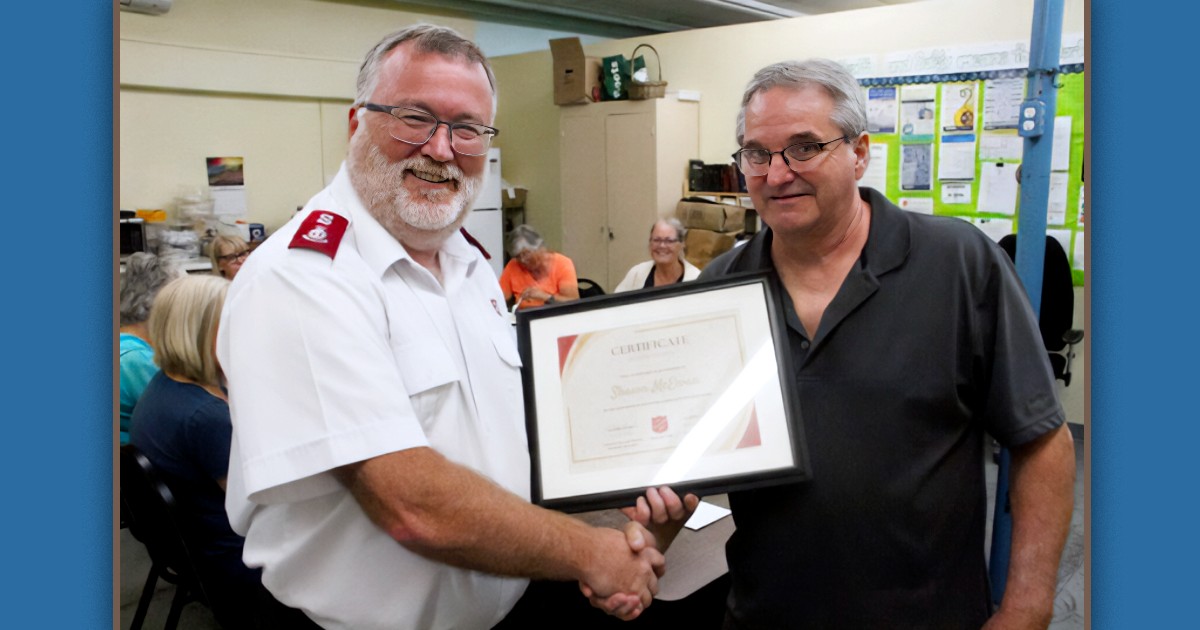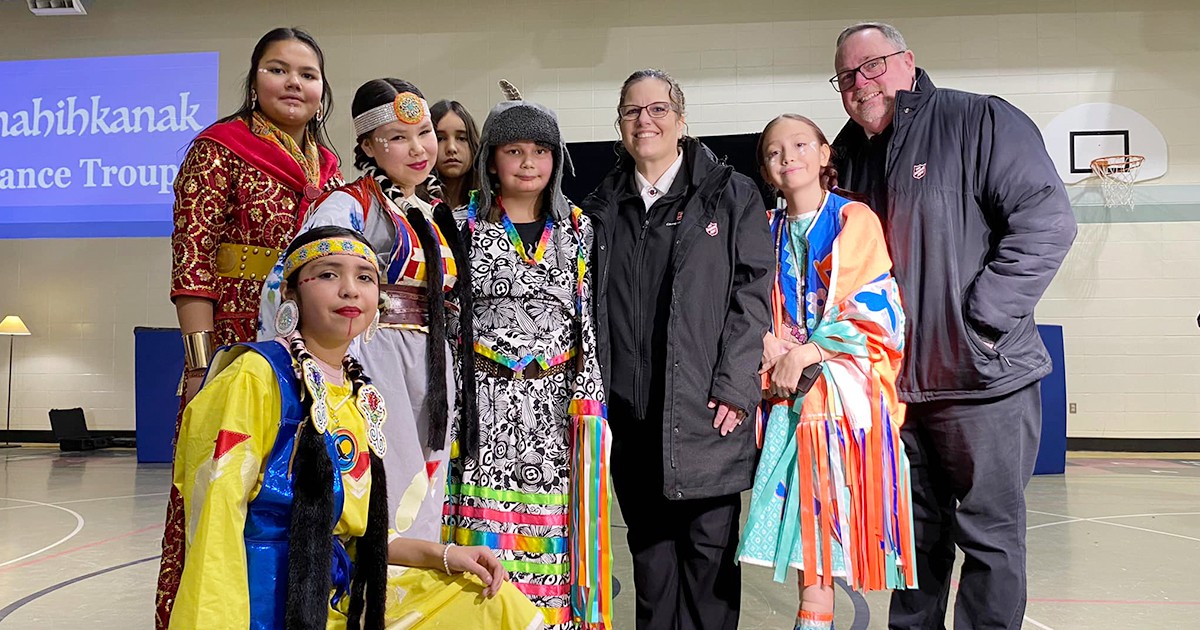You and I might see addicts, alcoholics and schizophrenics. And we might describe them in terms more derogatory than that. But the 13-member Family Health Team of doctors, nurses, social workers and psychiatrists at the clinic inside The Salvation Army's Centre of Hope in London, Ont., sees something else.
“That's what makes us different,” says social worker Dayle Allan. “We see beyond the wounds, the substance abuse and the mental health—we see the person.”
A Lifeline
Five days a week, approximately 100 troubled people troop into this clinic. Their needs are numerous and complex, ranging from chronic illnesses such as heart disease or diabetes to simpler complaints such as sore feet or open wounds.
But whether we call these patients “marginalized” or “stigmatized,” the reality is that these individuals—many of whom are or have been homeless—regularly need medical help. And this is where they find it.
“This is the forgotten part of London,” says Willy Van Klooster, executive director of the Family Health Team. “It's safe here. There's no judgment.”
Four years after it started leasing space from The Salvation Army, the Family Heath Team treats 2,500 patients, with 1,300 fully “rostered” and another 1,200 walk-ins. And unlike most doctors and health teams, this group accepts approximately 200 new patients a month.
Patients such as Maria Markiton, who first came here four years ago after an abusive relationship led to a stay at a local shelter.
“I was an alcoholic in a withdrawal-management program and I was looking for a doctor,” recalls Maria, who also struggles with chronic pain from fibromyalgia. “The people here have given me hope. They've helped me medically, physically and emotionally. They've given me a lifeline.”
Deconstructing Myths
Of course, the staff at this provincially funded clinic—one of only three in Ontario aimed specifically at vulnerable, street-involved clients (the other two clinics are in Toronto)—realize that unsympathetic Londoners might question why they pay to take care of those who, it might be argued, are the author of their own misfortunes.
The bottom-line explanation is that treating patients here helps relieve a huge drain on hospital emergency departments. Willy says it was discovered that some Family Health Team patients were visiting local emergency rooms between 50 and 250 times a year.
“Of course, the costs are way less here than they would be in an emergency department,” says Willy. “And they're getting better care because staff become familiar with the patients.”
But this clinic, which operates on an annual budget of approximately $1.5 million, is about more than saving money—it's about saving people. And the staff insist that many Londoners don't realize what a fine line separates them from this at-risk population.
“It's surprising the number of people who led pretty ordinary, normal lives, and then something went amiss and that put them on a whole other path,” says Willy.
Dayle says her job at the public clinic is twofold.
“We educate and we treat the unwell,” she says. “It's about deconstructing myths about homeless people and what that looks like. The reality is that we are just a couple of missed paycheques away from being in the same situation as a lot of the people we work with.”
(Reprinted from The London Free Press. June 3, 2013)
“That's what makes us different,” says social worker Dayle Allan. “We see beyond the wounds, the substance abuse and the mental health—we see the person.”
A Lifeline
Five days a week, approximately 100 troubled people troop into this clinic. Their needs are numerous and complex, ranging from chronic illnesses such as heart disease or diabetes to simpler complaints such as sore feet or open wounds.
But whether we call these patients “marginalized” or “stigmatized,” the reality is that these individuals—many of whom are or have been homeless—regularly need medical help. And this is where they find it.
“This is the forgotten part of London,” says Willy Van Klooster, executive director of the Family Health Team. “It's safe here. There's no judgment.”
Four years after it started leasing space from The Salvation Army, the Family Heath Team treats 2,500 patients, with 1,300 fully “rostered” and another 1,200 walk-ins. And unlike most doctors and health teams, this group accepts approximately 200 new patients a month.
Patients such as Maria Markiton, who first came here four years ago after an abusive relationship led to a stay at a local shelter.
“I was an alcoholic in a withdrawal-management program and I was looking for a doctor,” recalls Maria, who also struggles with chronic pain from fibromyalgia. “The people here have given me hope. They've helped me medically, physically and emotionally. They've given me a lifeline.”
Deconstructing Myths
Of course, the staff at this provincially funded clinic—one of only three in Ontario aimed specifically at vulnerable, street-involved clients (the other two clinics are in Toronto)—realize that unsympathetic Londoners might question why they pay to take care of those who, it might be argued, are the author of their own misfortunes.
The bottom-line explanation is that treating patients here helps relieve a huge drain on hospital emergency departments. Willy says it was discovered that some Family Health Team patients were visiting local emergency rooms between 50 and 250 times a year.
“Of course, the costs are way less here than they would be in an emergency department,” says Willy. “And they're getting better care because staff become familiar with the patients.”
But this clinic, which operates on an annual budget of approximately $1.5 million, is about more than saving money—it's about saving people. And the staff insist that many Londoners don't realize what a fine line separates them from this at-risk population.
“It's surprising the number of people who led pretty ordinary, normal lives, and then something went amiss and that put them on a whole other path,” says Willy.
Dayle says her job at the public clinic is twofold.
“We educate and we treat the unwell,” she says. “It's about deconstructing myths about homeless people and what that looks like. The reality is that we are just a couple of missed paycheques away from being in the same situation as a lot of the people we work with.”
(Reprinted from The London Free Press. June 3, 2013)










Leave a Comment